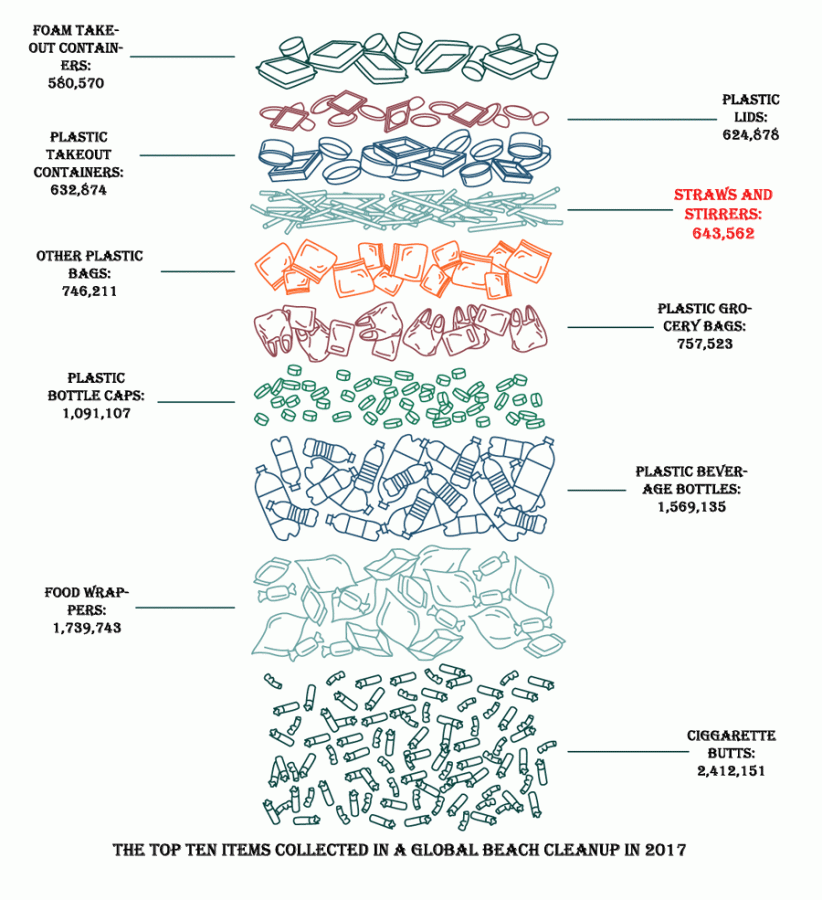The negative effects plastic straws gives to the environment
Feb 8, 2019
Plastic straws are terrible, not only for the environment, but also for the body. This type of straw is single-use, meaning they are used once and then discarded into a landfill where it will never biodegrade.
Single-use plastic straws are made out of polypropylene; which is a type of plastic commonly made from petroleum. Evidence shows that chemicals from polypropylene can seep into liquids, and affect a person’s health.
As stated in washingtonpost.com, drinking acidic or sugary drinks through a straw can increase the likelihood of getting cavities.
Moreover, they send a concentrated stream of the liquid into a specific part of the tooth. This can destroy tooth enamel and cause tooth decay.
Sipping liquids through straws can also spike sugar intake. They cause a person to gulp down drinks faster than if they were to use a cup. Additionally, leading to alcohol consumers getting intoxicated faster.
As reported by yr.media, there are an estimated 7.5 million plastic straws on America’s shorelines alone, which has led scientists to believe there could be 437 million to 8.3 billion plastic straws on coastlines across the world.
This means that the environment is also suffering from the excessive use of plastic straws. Marine life will ingest plastic in the ocean, killing nearly one million each year. Nearly one million birds die from the same reason each year.
According to strawlessocean.org, plastic straws are too light weight to go through a plastic sorter.
They drop through the sorting screens and mix with other materials that are not big enough to separate. Meaning, they can not be recycled.
Straws land in the ocean because of human’s mistakes. It is either littering, or a garbage overflow. Piling up to be able to kill thousands of animals.
Once the plastic is in the ocean, it breaks up into smaller and smaller pieces that animals such as seagulls and sea turtles ingest. Almost all sea turtles eat this type of broken down plastic.
This needs to stop, humans have to finally learn from their own mistakes. It will definitely not completely take away the animal death caused by plastic, but it will help. One step at a time.




